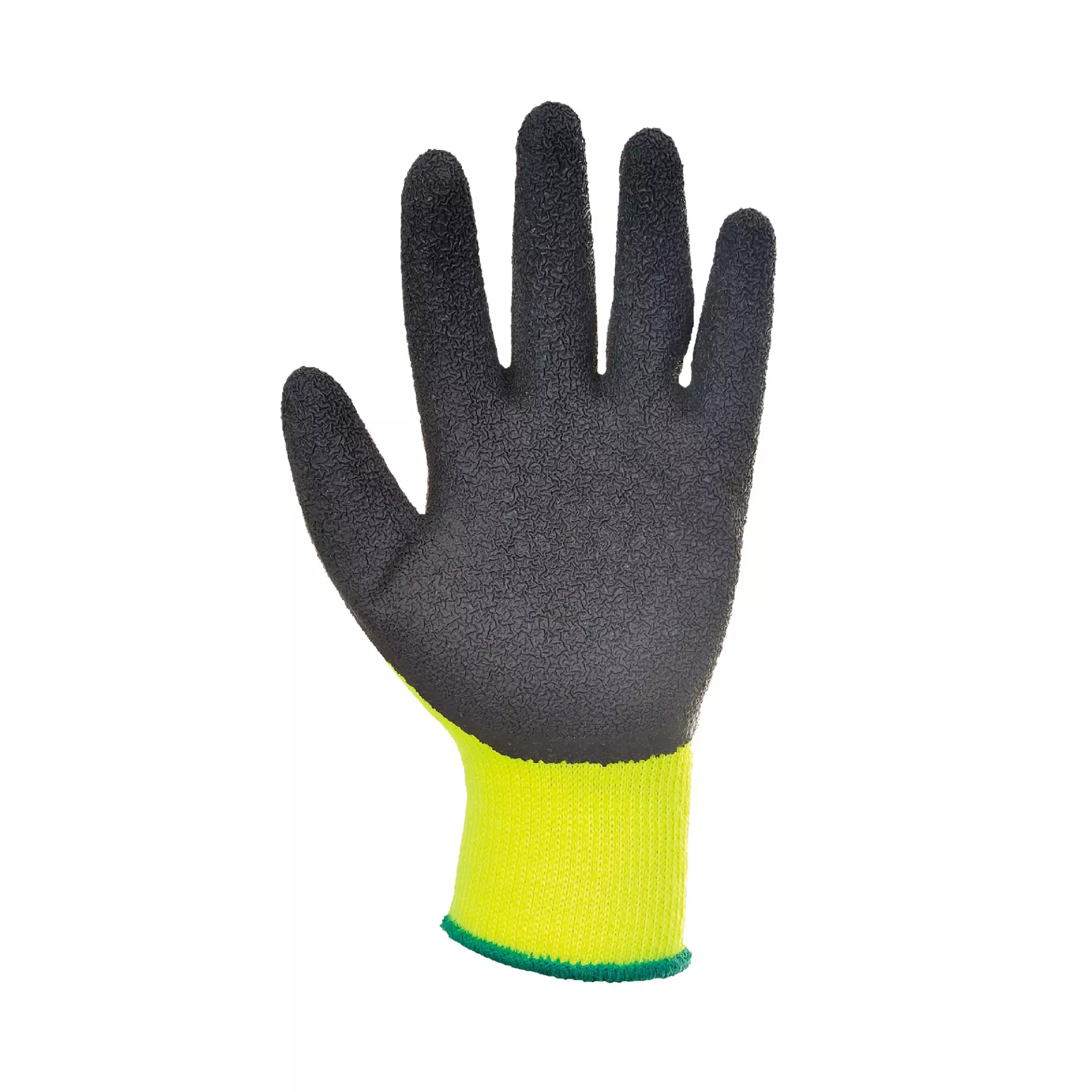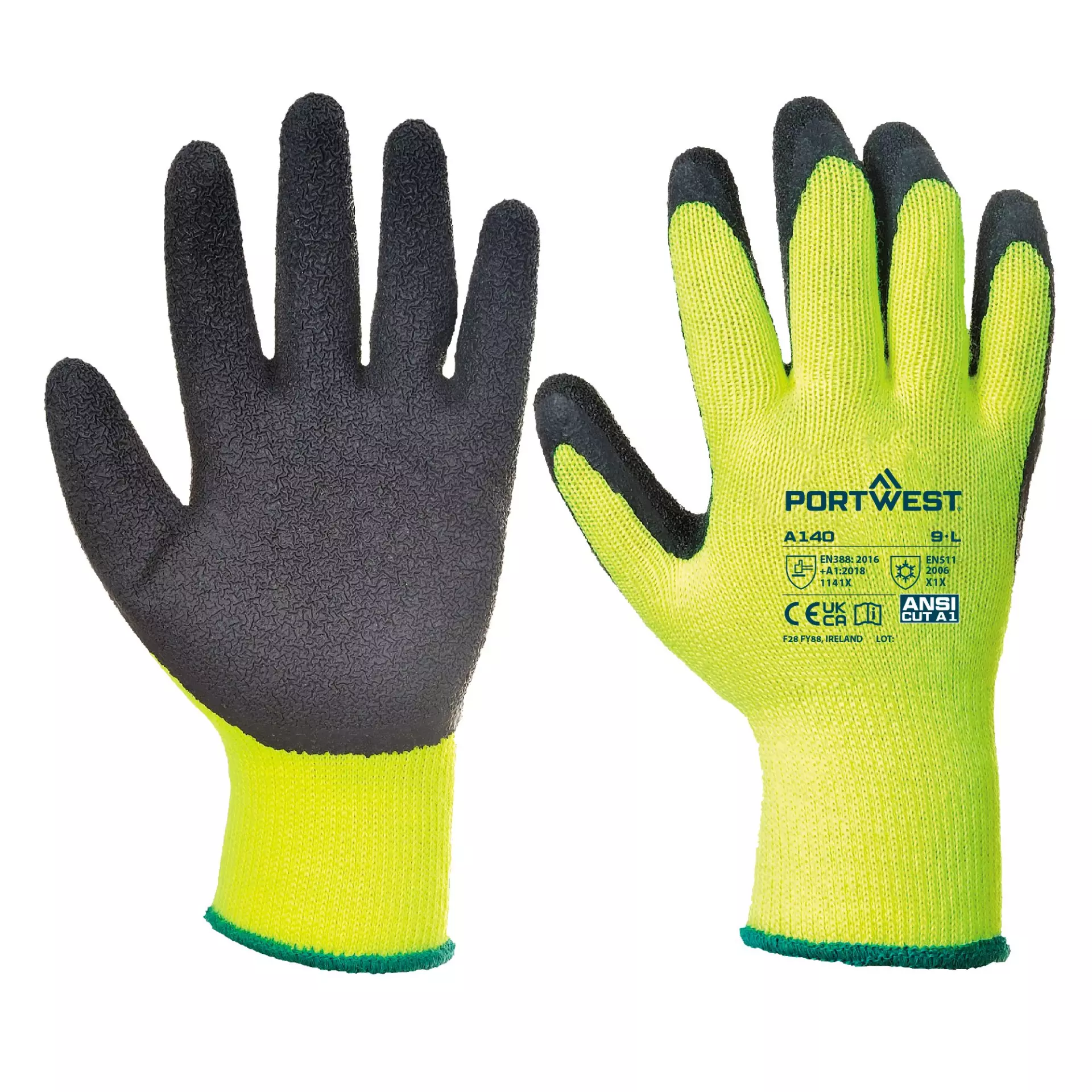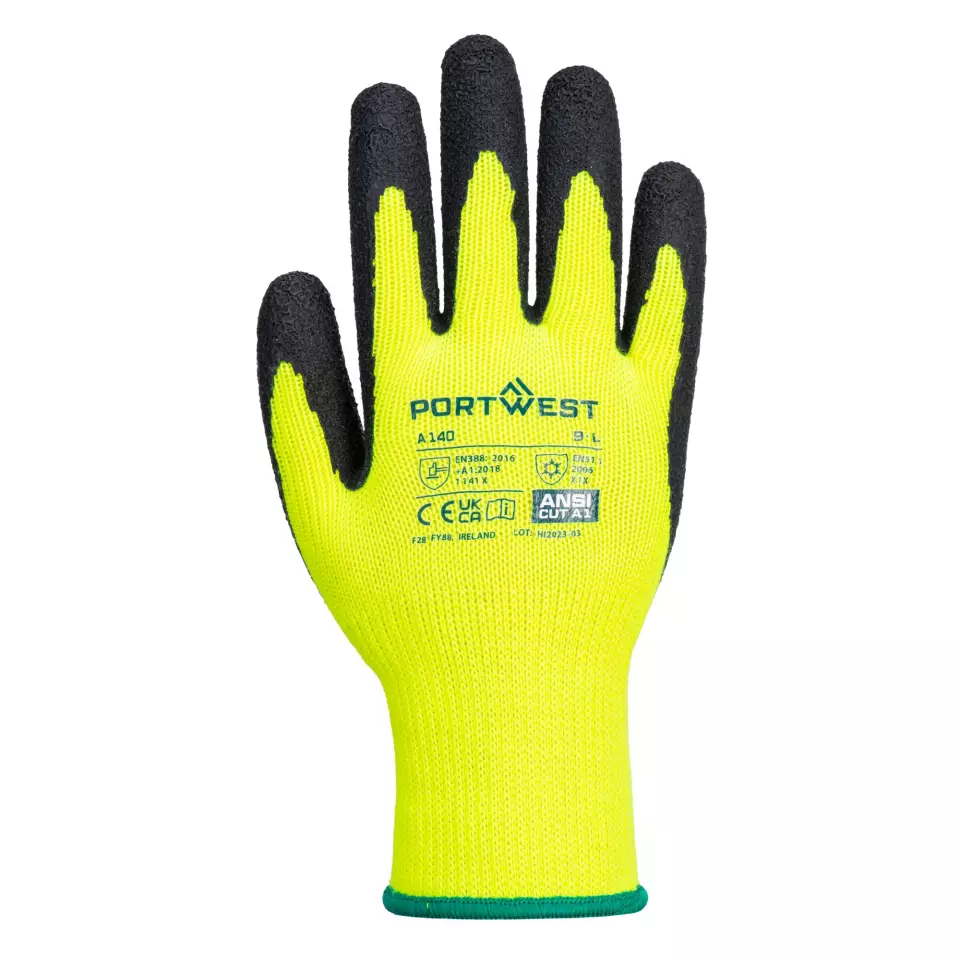


Features You'll Love

EN 388 · Abrasion Resistance Level 1, Tear Resistance Level 4, Puncture Resistance Level 1
Provides basic resistance against scraping and surface wear for low-risk tasks.
Offers the highest level of protection against tearing, withstanding a strong force before ripping.
Provides basic protection against punctures from blunt objects like splinters, not sharp points like needles.
Portwest
Thermal Grip Glove - Latex, Black, 12 pairs
Thermal Grip Glove - Latex, Black, 12 pairs
4.4 / 5
43,23 €
Price per 12 pairs
3,60 € / pair
Choose size
Shipping fee is 7,95 € for orders under 80,00 €
Features You'll Love

EN 388 · Abrasion Resistance Level 1, Tear Resistance Level 4, Puncture Resistance Level 1
Provides basic resistance against scraping and surface wear for low-risk tasks.
Offers the highest level of protection against tearing, withstanding a strong force before ripping.
Provides basic protection against punctures from blunt objects like splinters, not sharp points like needles.
Product description
Professional cold weather protection glove featuring a warm 10-gauge acrylic liner and crinkle latex palm coating for enhanced grip performance. Specially designed for cold conditions with palm dipping that increases dexterity and ventilation while maintaining breathability through its seamless liner construction. The ergonomic design ensures comfort during extended use in demanding outdoor applications.
Product Features:
- Warm 10-gauge acrylic liner for cold protection
- Palm dipped design to increase dexterity and ventilation
- Crinkle latex grip offers excellent grip performance
- Breathable seamless liner construction
- Ergonomically designed for comfort and ease of use
Technical Details:
- CE certified
- ANSI cut level A1
- EN ISO 21420: 2020 Dexterity 4
- EN 388: 2016 + A1: 2018 (1141X)
- EN 511: 2006 (X1X)
Recommended Applications:
- Construction and transportation work
- Refuse collection operations
- Maintenance tasks
- Local authority work
- Heavy duty outdoor tasks in cold conditions
Standards:
- ANSI/ISEA 105: 2016 CUT Level (A1)
- ANSI/ISEA 105: 2016 ABRASION Level (3)
- ANSI/ISEA 105: 2016 PUNCTURE Level (2)